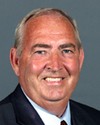Mr. Speaker, my colleague's comments are very relevant to the problem that we have had in the past. In the past, there were some 300 lists that one could register for. Bringing this into the spectrum of making it reasonable for the public, there will now be one list. That one list would be put in place and if someone registers on the do no call list, that will be circulated to all of the different companies. All of the groups would have to check in with that and any organizations that are making telephone calls would have to check with the do not call list, the one large list, to make certain that they do not interfere.
As I understand it, that list would be updated on a very regular basis, monthly or whatever time period in the short term, so that when people do register, other corporations have to go back and work in the system and get all of the new registrations that come in within a certain time period.
As well, there will be consultations with groups across the country on an ongoing basis to deal with other problems and other concerns that may come forward with that list. It is the mandate of the CRTC at this point in time to carry on public information sessions and to listen to concerns of the public, as well as set up the mechanisms by which organizations are going to operate the lists and will be able to work within the structure to ensure the application of the do not call list is carried out. All of the concerns that stem around general public concerns will be answered through the organization that will be created. At this point in time, there will be public consultations and input accepted from the public in order to move this forward.

